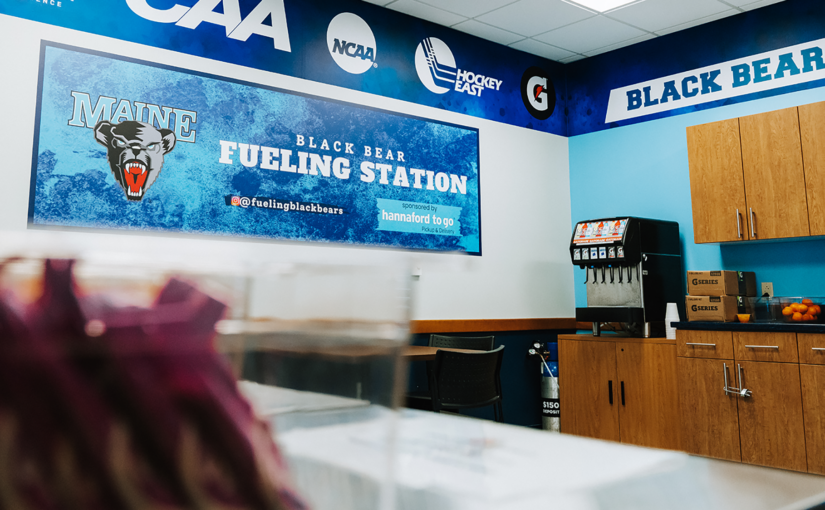Flashy Uniforms Are Resonating With Recruits
Programs across the country use uniforms to sell an image of bold and hip — wooing recruits with the point of a threaded needle — creating excitement and buzz. Case in point: Arizona State. When was the last time the Sun Devils came up in casual conversation about college football? But now Arizona State has recruits talking, athletes jazzed up and athletic department officials grinning. As one of the latest schools to update their threads like Oregon, the Sun Devils have grabbed their inner pitchfork and turned bold — and very black — uniforms into the freshest recruiting tool in the desert.
“I’ve always said if Oregon would have offered me (a scholarship), it would have been a tough thing to turn them down just for the uniforms,” ASU defensive back Omar Bolden says. “And I hate cold weather.” He proves the point that while some find Oregon’s style excessive and borderline hideous, the players love the duds.
But now Bolden has what he always wanted. “They aren’t just new jerseys, they are a new attitude,” he says. “I’m liking this a lot more. Its new, its fresh, its fly.”
Now Oregon has a new tool in its wardrobe too, just in time for the Rose Bowl against Wisconsin. The Ducks will unveil a new look, complete with 11 different materials on the uniform designed for efficiency. The new uniforms feature a chain maille mesh, new padding, breathable materials and a design with larger, bolder moves (duck wings mirrored on the shiny black helmet with the Oregon “O” in a top-center placement).
Oregon started the trend and now schools across the country are getting in on it, creating a fad of new unis, including Oklahoma State, Washington State, TCU, Maryland, Georgia and even Stanford.
PHOTO GALLERY: Oregon’s quacky uniforms
Boldness creates buzz. Buzz begets attention, which, of course, lures recruits. “There were parents who told me, ’My son is interested because he loves your jersey and you have multiple jerseys,’” says former Oregon coach Mike Bellotti. “If you have that interest you can follow up with it.”
Bolden predicts 80 percent of the Ducks play there because they were drawn by the uniforms. “I think there is a proven correlation in interest in recruiting and visual images kids see on TV that they think is cool,” Bellotti says. “Our kids said we only get to play one game a week and it is nice to have options on how we dress. Interchangeable jerseys, different colors, adding black, strong colors, that all resonates with youth.”
And it doesn’t really matter what the general public thinks, only what the recruits want. “I know that the first couple of years many people were saying they hated the uniforms,” Bellotti says. “But they were talking about them.”
That’s exactly what Arizona State wanted and Steve Hank, the associate athletic director in charge of the rebrand, says the Sun Devils succeeded in building “fantastic buzz” while improving consistency and making the school contemporary. Hank says students have told him the new look is “sick” and “a beast.”
“We wanted to be bold and powerful and be contemporary with today’s market for recruiting,” Hank says. And that meant adding black and copper to the traditional maroon and gold, while playing up the pitchfork logo and pushing the un-hip Sparky logo to the bench.
It comes as no surprise the Sun Devils love their look, since the students joined with Nike to create it. Todd Van Horne, Nike’s global creative director, says Arizona State wasn’t afraid to embrace student-led “innovative” change. “I think if you listen to what the athletes are saying, they like to wear something different every Saturday,” he says. “They like to mix and match. A little different look gives them pep in their step. It is the old Michael Jordan adage, ’I look good, I feel good, I play good.’”
Bolden even equates his new look to going on a date. “When you look good in something, you feel good and that sets the vibe for the whole night,” he says.
As schools create a third jersey, what Van Horne labels a “big-game jersey,” the thought centers around developing a tougher, badder and more aggressive “alternate ego” for the team. Since athletes beg for black don’t expect the proliferation of black jerseys to fade anytime soon. “People look at it as sacrilegious,” Bellotti says. “The people who are complaining about it haven’t worn a jersey in 30 to 40 years, or haven’t worn one at all.”
“For us, black is an attitude,” Hank says. “Not every school can wear black, but it resonates with the student-athletes and fan base.”
Walker Jones, Under Armour’s director of sports marketing, says since black isn’t a traditional school color, it fits well as an add-in for a wide range of programs. Plus, black looks sharp on television and sells merchandise — blackouts, for example, entice jersey sales. “Everybody is looking for a recruiting advantage with their uniform,” Jones says. “We try to walk that fine line of giving them an alternative look and tying back to history.”
But when tradition equals a muddled duck pond of failed jersey attempts, schools open up the possibility of going innovative. The University of Oregon created the first major uniform buzz in college football in 1998 by unveiling a vivid color scheme and dropping the Donald Duck-like logo in favor of the stylized “O” under the watch of athletic director Bill Moos and Bellotti, who credits a mix-and-match look at the University of Miami with jumpstarting Oregon’s culture-shocking work. Then Oregon continued uniform ingenuity for a decade, backing it up with on-field wins.
The attention grabbing worked. “It was all about recruiting,” says Moos, now the athletic director at Washington State. “A young person wasn’t going to get revved up about putting on a jersey with Donald Duck.” Oregon didn’t stop, using Nike’s excitement and athlete participation to switch up the look every couple of years, creating new buzz in the fashion-conscious world of the youth, the same group they were recruiting.
Moos took those ideas to Washington State and made it a top priority when he got there in 2010. Moos wanted to “honor the past, live the present and create the future” so he built a uniform “that appeals to that 17-year-old high school football player.”
To compliment the cougar head leaping from Washington State’s logo Moos wanted the perfect crimson. With a smattering of color swatches littering his desk, Moos couldn’t find that right match. That was, until he took a physical and realized the color of his blood worked well. “I played here, my parents are graduates,” he says. “I’ve been a Cougar since I was old enough to know what one was.” Right at the end of his in-office physical, the nurse took a syringe of Moos’ blood for testing. “I opened the drawer, got out the swatches and matched it. 69W at Nike is the color we chose: A crimson matching with the blood of a Cougar.”
Along with a fresh crimson, Washington State enhanced its gray. With 27 different gameday combinations, the school has pants, shirts and helmets for every occasion. And what about being one of the few schools not to add in black? Their ampersand gray — an alternative and deeply dark gray — should suffice.
“The student-athletes are just beside themselves. We have alternative looks. We can mix and match,” Moos says in a tone that implies if you don’t have those options you don’t have a uniform that excites athletes.
Oklahoma State unveiled an edgier uniform — designed by Nike — earlier this season. The uniforms featured interchangeable options as the Cowboys went bold with combinations of black, orange and possibly gray across four jerseys, four sets of pants and three helmets.
Oklahoma State associate vice president Kyle Wray says “college students like different” and one student-athlete in particular challenged Nike to think of his locker as a closet, offering him mixing and matching “depending on the attitude and personality of his team, the tone of a given game, the stadium environment and the opponent standing on the other side of the line of scrimmage.”
Arizona State knows it entered the ground floor of a new trend, a house built by the Nike-Oregon relationship. With Washington State, Oklahoma State and others not far behind, Nike’s Van Horne admits the visual innovation doesn’t fit everyone. But in the world of recruiting, blending in simply doesn’t work, either. “The worst thing is everybody looks the same out there,” Van Horne says. He wants schools to realize they lack an individual statement and then do something about it, preferably in a bold, innovative manner.
And while some schools create their unique statement with tradition so many others need more than a color switch on a stripe. A lot more. In less tradition-entrenched programs it takes metallic helmets, color combinations only math majors can understand, pitchforks dripping in copper, all-black uniforms and Cougar-blood crimson to get people talking. Or more importantly, to get recruits talking.







